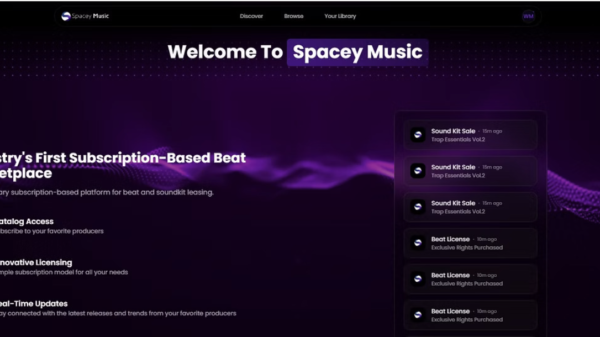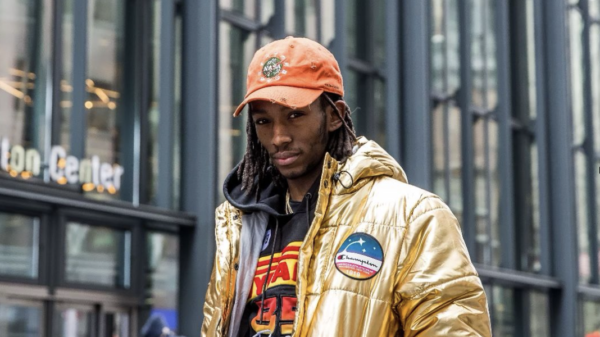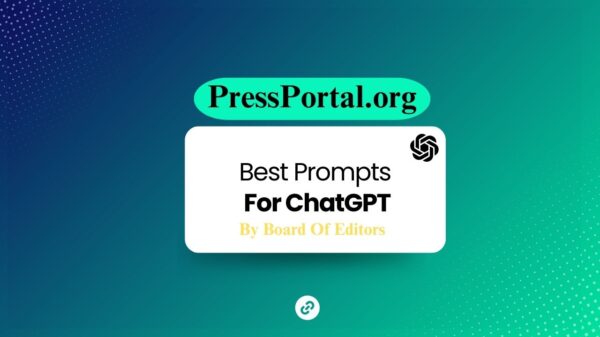“It was our Woodstock, but better,” Nile Rodgers asserts in Live Aid: When Rock ’n’ Roll Took on the World, referring to the all-star charity concerts broadcast around the world 40 years ago. Boomers may quibble, even with the presence of Mick Jagger, David Bowie, Bob Dylan, and a reunited Led Zeppelin at those shows. But when it came to ambition, funds raised, and global cooperation, Rodgers has a point.
Those 1985 multi-artist shows in London and Philadelphia — which raised the equivalent of $450 million in today’s currency for African famine relief and boasted lineups full of legends and icons of the MTV era (U2, Madonna, Duran Duran) — aimed big and worked better than anyone could have expected. And that’s not counting the two charity singles from that period, Band Aid’s “Do They Know It’s Christmas?” and USA for Africa’s “We Are the World,” or the Live 8 follow-up benefit shows that happened in 2005. All combined, one can easily imagine a multi-hour documentary on that time when pop stars decided it was time to give something back and prove to the world that they weren’t just apolitical hedonists.
Directed by Tom Pollard, Live Aid: When Rock ‘n’ Roll Took on the World aims to tell that story, and indeed over multiple hours. Part one (about the making of the Band Aid single and plans for Live Aid) debuted on CNN July 13, and the three subsequent parts arrive on Sundays through Aug. 3. Parts two and three delve into the making of “We Are the World” and the Live Aid shows, and part four explores Live 8. (The Greatest Night in Pop, the recent Netflix doc about the making of “We Are the World,” remains the definitive chronicle of that song, though.)
After 40 years, Live Aid is still remembered for a handful of made-for-TV moments: Queen’s triumphant takeover at Wembley Stadium, Madonna saying she’s “not taking shit off” to a heckler during her set at JFK Stadium (photos of her had just appeared in a porn mag), Jagger and Tina Turner cavorting onstage together in Philadelphia, Phil Collins taking the Concorde jet to join Led Zeppelin in the States after playing a few of his own songs in London. (Whether all of these are as iconic as Hendrix playing “The Star-Spangled Banner” or Country Joe McDonald leading the “Fish Cheer” at Woodstock is another matter.) But Live Aid still manages to unearth plenty of new insights and details, thanks to interviews with organizer Bob Geldof, Bono, the Who’s Pete Townshend, and politicians (like George W. Bush and Tony Blair) who came aboard for Live 8, which aimed to help African nations struggling with debt and the AIDS crisis. A few things we learned from the four-part doc:
Editor’s picks
Forty-one years after “Do They Know It’s Christmas?” Bob Geldof remains the tormented soul of the whole endeavor.
As Live Aid reminds us, the charity concerts and records began when Geldof, then best known as lead singer of the Irish rock band the Boomtown Rats, watched a television news report about people in Ethiopia dying of starvation. Soon after, he found himself at a fashion-book launch party, where, as seen in the doc, he starts talking about the crisis while a fellow partygoer asks him if he wants more champagne. Geldof then became obsessed with ensuring pop could play a role in raising money and awareness of the crisis.
“He’s had to stick with it through all these years, thick and thin,” Pete Townshend says of Geldof, and he’s right. Now 73, the scruffy-as-ever Geldof has the haunted gaze of someone who witnessed (and coped with) more than he’d bargained for. Live Aid shows all the ways he could have easily pulled out all of his now-white hair while working on both the charity concerts and the single. We see his reaction when he’s told, during Live Aid, that not enough people are calling in, leading to Geldof going on camera himself to hector viewers into forking over more cash. Rounding up artists for Live 8 after filling Blair in on African deaths in 2005 (“It’s happening again”! he screams at the prime minister over the phone), Geldof finds himself again badgering musicians to sign up for another charity show. “Did I have to call all these people again?” Geldof recalls. “The embarrassment of it, you have no idea.”
Related Content
We see him phoning Jagger to see if he’d reprise his performance from the 1985 show. (“We have to think about it, Bob,” says Jagger, who does not participate.) When Geldof learns that it will take five years for the most powerful countries on the world to double their African relief funds after Live 8, he practically loses it at a press conference, which even Bono calls “a very, very intense moment.” Geldof, in other words, has earned his white locks.
Many had doubts about many different aspects of the records and shows.
As revealed in new interviews, Queen’s Brian May thought the idea of broadcasting Live Aid around the world via satellite was “a hare-brained scheme.” Ultravox’s Midge Ure, who co-wrote and produced the Band Aid single, recalls hearing Geldof’s acoustic demo for “Do They Know It’s Christmas?” and thinking it sounded too much like Bob Dylan. Geldof readily confesses that he wasn’t the biggest fan of Queen, who did not get a headlining slot at Live Aid. “’We just use the studio as an instrument’ — fuck off!” Geldof says, describing his initial, punk-raised skepticism of them. (But like most of us watching, Geldof was won over by their utterly commanding set.) When Geldof reached out years later to Madonna — by mail — to see if she’d play Live 8, as she did Live Aid, she wrote him back, dispensing with the cordialities and expressing skepticism about where the money would go. As Geldof recalls of the way the letter started, “It said, ‘So…’”
Questions about the lack of Black artists dogged both Live Aid and Live 8.
As soon as the lineup for the first Live Aid was announced, the low percentage of prominent Black pop stars (only 10 percent) was duly noted, and Geldof was taken to task. A Black U.K. journalist is seen here saying the show was coming from a “white paternalistic place.” In interviews at the time, Geldof replied that his organization had approached the Black artists who participated in “We Are the World” — Lionel Richie, Michael Jackson, Diana Ross — and well as Prince (who didn’t partake in either), and said they’d heard nothing back. In a new interview, Geldof still defends the absence of diversity at the London show as being “an entirely logical and practical matter,” meaning there simply weren’t too many massively popular Black British artists at the time, in his opinion; only Sade is represented.
The Philadelphia show wound up being more diverse, thanks to the participation of Tina Turner, Patti LaBelle, Ashford and Simpson, Run-D.M.C., Billy Ocean, and the Four Tops. As we see in the moment where she flung off her shoes and danced barefoot, LaBelle was concerned she would be electrocuted thanks to water and wiring on the stage. And in the end, Richie says he flew to Philadelphia just in time to participate in the unfortunately anticlimactic “We Are the World” finale, which was still missing about 90 percent of its original participants.
The diversity issue re-emerged at the 2005 Live 8 shows, especially in London, where the only African artist on the bill was Senegalese pop star Youssou N’Dour. (Again, the Philly show was more wide-ranging, thanks to a lineup that included Jay-Z, Destiny’s Child, Alicia Keys, and Will Smith.) Of the London show, Bono says, “We did our best to make it more involving of African artists and failed. We fucked up.”
The reunions were as fraught as we assumed they probably were.
Between Live Aid and Live 8, a number of heritage acts whose members barely spoke to each other anymore — Led Zeppelin, the Who, Crosby, Stills, Nash, and Young, Pink Floyd, Black Sabbath — decided to put aside their grievances for the cause. Live Aid: When Rock ’n’ Roll Took on the World doesn’t chronicle each of those reunions (nothing on Floyd, alas), but the ones included hint at the backstage drama.
By the time Geldof held a press conference to roll out the first lineup of Live Aid, the Who had been disbanded for several years. But that didn’t stop Geldof from announcing they were participating before they’d even been asked. “No, we weren’t going to get back together,” says a deadpan Pete Townshend. “It was blackmail.” Looking back at the premature announcement of that band and others, Ure now says, “If I’d done that, I would have been sued,” but no one could deny Geldof’s passion and commitment, and he prevailed. (And with “Won’t Get Fooled Again,” the Who played as if they meant to blast poverty out of existence.)
Then there’s Led Zeppelin, who hadn’t performed live since the death five years earlier of drummer John Bonham. Robert Plant, Jimmy Page, and John Paul Jones clearly thought their set (with Collins filling in on the drum kit) was such a trainwreck that they’ve never allowed it to be rebroadcast. Sure enough, we don’t see even a second of it here. As MTV VJ Alan Hunter attempts to interview all four backstage after the set, he encounters such a non-responsive band that Collins has to continually speak on their behalf. “It wasn’t a very friendly place, the Zeppelin dressing room,” Colins says now. “Robert was great, but the other guys didn’t seem to be keen on the idea of this.”
Speaking of Collins, Cher materialized onstage at Live Aid in Philadelphia thanks to … him?
One of the things we learned from Live Aid is that not every moment at these shows was purely altruistic. Collins participated in the London show (backing Sting on “Every Breath You Take,” for one thing) before hopping on a Concorde jet that took him to the U.S. in time for him to sing his own songs and then join Zeppelin. As a show promoter admits, the stunt was also a way to promote the Concorde, the One Percenter plane that could zip from London to the East Coast in just over three hours.
Watching the way the media tracked Collins from his departure from Wembley to his arrival in Philadelphia was inadvertently comical at the time and remains so. The added bonus here is Collins recalling how he ran into a fellow passenger on that flight, Cher. When he told her of the show, she said, “Oh, could you get me on it?” And there she was, joining in on the “We Are the World” finale.
The tale of Paul McCartney and his microphone is worth a documentary of its own.
The London Live Aid show was set to close with McCartney singing and playing piano on “Let It Be.” But the best-laid plans of Macca and men can easily go south, which happened that night when McCartney’s mic went dead. He didn’t realize the glitch, but Geldof, David Bowie, Townshend, and Yaz’s Alison Moyet did and walked onstage to sing along. (“Peter or David said, ‘Let’s help him,’” Geldof recalls.) The crowd joined in too, salvaging a potential disaster, but Geldof still recalls the moment with head-shaking disbelief, and production manager Andrew Zweck now recalls, sheepishly, that he’s “been forever embarrassed” about it and has “never been invited to work with Paul since.”
Even Bono knew he was having a bad hair day.
Remembering the mullet he sported at Live Aid, Bono still winces: “I can’t look at that fucking thing,” he says. He also admits that the moment he waded into the crowd to help a young woman in distress was somewhat calculated: “The performer in me is looking for some kind of moment,” he says. But it was effective, so give him that.
Raising the money for food and relief was one thing; getting it to the people who needed it was another.
This part of the story isn’t news, but the various hurdles that the Live Aid organization faced, both in 1985 and 20 years later, are still eye-opening. The grain shipment to Ethiopia in 1985 was delayed due to local cartels charging a heavy surcharge for transporting it. Still flashing raw emotions, Geldof feels he was practically coerced into visiting Africa in 1985: The press was already bored with the story and needed a fresh angle, so he felt he had no choice but to visit a refugee camp. Two former Ethiopian government officials add now that they took issue with the title and lyrics of “Do They Know It’s Christmas?”: “They didn’t do their homework,” says one. “Ethiopians are the oldest Christians in the world.”
In so many ways, Live Aid proves it really isn’t 1985 or 2005 anymore.
One of the most jarring moments in Live Aid arrives with footage of world leaders convening for the 2005 G8 summit in Scotland. George W. Bush is there, as is then-British prime minister Tony Blair — and even Vladimir Putin, not looking entirely at ease but cooperating with the other heads of state regardless. As Blair says, “It was probably one of the last moments of truly global solidarity that I can remember.”
Interviewed for the doc, Bush also supplies its most comical moments, intentionally or not. For Live 8, Bono had stepped up to be as much of a spokesperson as Geldof. (As Geldof notes wisely, “By this time he was a mega global superstar. I wasn’t.”) After Bush chief of staff Joshua Bolten tells his boss that Bono has requested a meeting, he then asks if Bush knows who he’s talking about. “Yeah, he married Cher,” Bush replies.
Trending Stories
“I could not tell if he was kidding,” Bolten says, “and I said, ‘No, that’s Sonny Bono, who is dead.’” When Bush convened with Bono and Geldof, the former president recalls, “I didn’t have a clue who Geldof was,” adding that he “looked like he’d crawled out from underneath the ground.”
Yet it’s also striking to see an American president making the case for his country stepping up to assist poor, debt-ridden nations amidst the AIDS crisis. “At the time … I’m president of what I consider to be the most generous nation in the world,” Bush says, “and we’re doing nothing about it.” And he made sure it happened, with no transactional aspect. Imagine that.





























